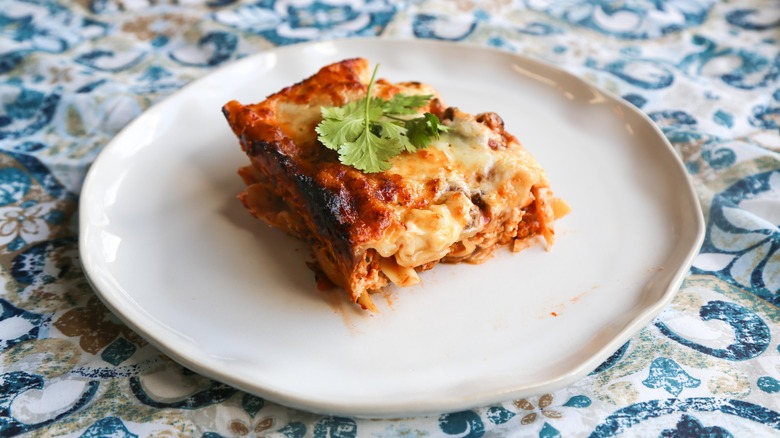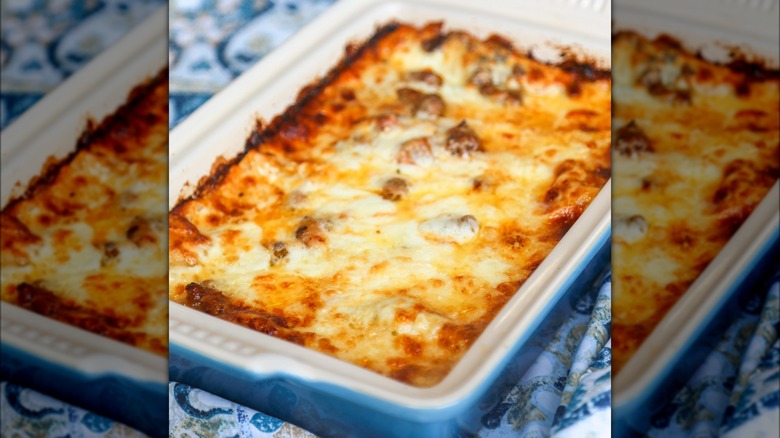How Long Can You Freeze Leftover Lasagna For Without It Going Bad?
Is there any better leftover staple than a big batch of lasagna? Whipping one up at the start of the week and storing it for later is an ideal strategy for busy households, particularly because of how well it keeps. When describing how to make her easy lasagna, Mashed recipe developer Maren Epstein shared that a batch "should last five days in the fridge, but you can freeze it for up to six months."
This is a seriously long storage time, and it gives you a great fallback option if you forget to pick something up at the store (or if you just really don't feel like cooking something fresh). Because lasagna pairs well with many easy-to-make sides like salads, garlic bread, or asparagus, your meal can vary night by night depending on your mood.
Even with that six month window, though, it's wise to check if your frozen lasagna is still good before you reheat it. If you notice signs of freezer burn, such as dry spots or discoloration, it likely won't be as tasty the second time around. Mold, in particular, shouldn't be trifled with, so if you see any, toss the food immediately. Other signs that your lasagna has gone bad can appear after thawing, such as a sour smell or a slimy texture. If you spot either of these features, you're better off avoiding the dish.
How to reheat frozen lasagna
When reheating a frozen lasagna, the oven is your best bet. Transfer the food to an oven-proof dish (unless it's already in one), then cover it with aluminum foil. A thawed lasagna should take about 30 to 45 minutes to fully reheat at 350 degrees Fahrenheit. If you're unsure, a gently bubbling sauce is a reliable sign that it's ready. While you can use the microwave in a pinch, the high heat will dry out your lasagna and leave you with a sauceless, overly crispy dinner.
If you forgot to thaw your lasagna overnight, don't worry. You can still salvage it, but it'll take about twice as long to reheat in the oven if you're cooking it straight from frozen.
The only downside to reheating lasagna is that the texture can never match that of a fresh batch. The process of freezing and thawing results in excess moisture thanks to the ice crystals that form (and later melt) on your food. While you can alleviate this by setting your freezer to the right temperature so it freezes food quickly, it's still not a perfect solution. Sadly, freezing a lasagna will also cost a bit of its structural integrity, as moisture causes the layers to slide off of one another. Some chefs even suggest enjoying your leftover lasagna cold — not frozen — so it's still nice and firm.

